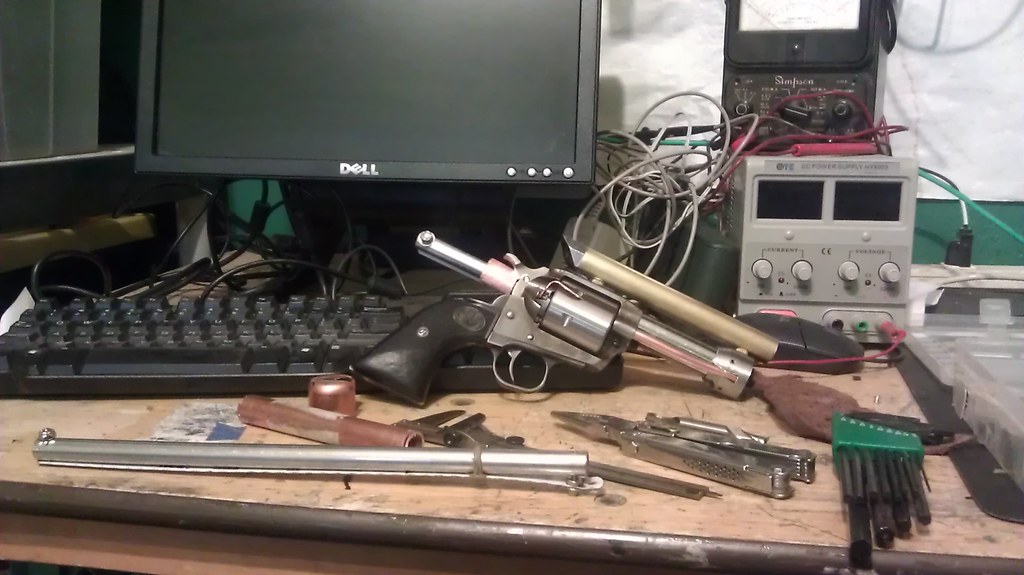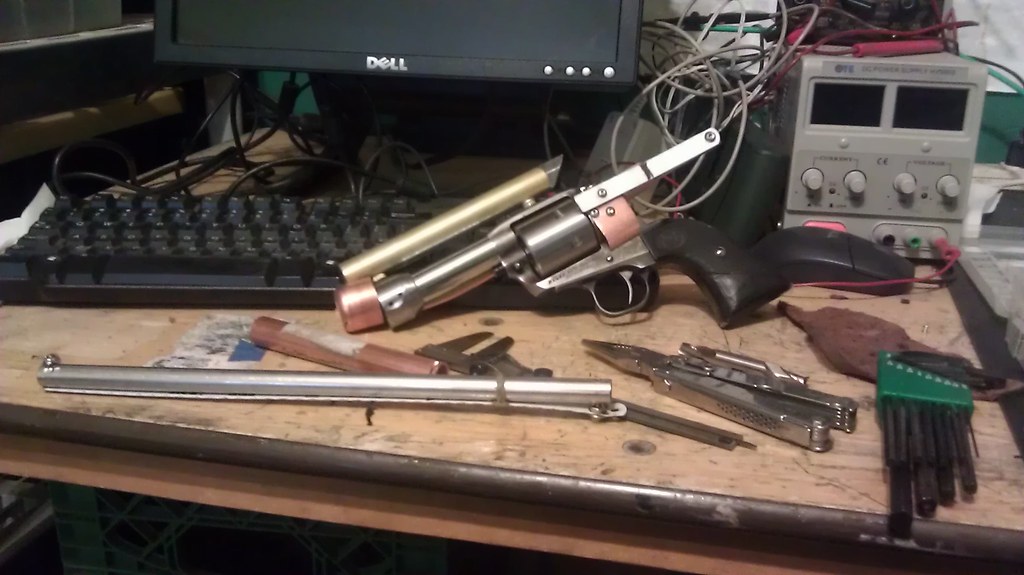I just got a new-to-me Ruger Blackhawk in .327 magnum. I had thought about getting one over the last year or so and then the gun craziness hit in November. Anyway, I looked on the Ruger site to see what the price is now and it was no longer listed. I picked this one up used and here are my opinions for what it is worth. I have single six in .32 H&R and this revolver is just more solid and bigger when you pick it up. The gun weighs about 3 pounds empty and that is part of what makes it so pleasant to shoot as it lessens the felt recoil.

I bought a couple of boxes of Federal 100 grain loads and they clocked out around 1600 FPS or more so that puts the kinetic energy around the 570 ft/lbs range.

The recoil would calculate to be around 5 ft/lbs with this load. For comparison, think of a 2.5 pound pistol in 40 S&W shooting a 180 grain load at 1025 fps would make about 420 ft/lbs of energy and generate about 6 ft/lbs of recoil. In other words, the Ruger makes 150 ft/lbs more energy than the 40 S&W 180 load, 35% more, while the 40 S&W has 20% more felt recoil than the Ruger.
I am old enough to remember when Ruger made a Blackhawk in .357 Maximum. Ruger made the cylinder shorter than the Dan Wesson in the same caliber. Silhouette shooters liked to load 180 and 200 grain bullets which worked fine in the DW but were long for the Ruger. The Ruger owners were shooting a lot more 158 grain bullets and flame cutting was an issue with the light bullets and the Rugers were soon pulled off the market. Someone at Ruger must have remembered this when designing the .327 Blackhawk as the top of the 100 grain load is around 0.245” from the front of the cylinder.

The cylinder will easily handle longer/heavier bullets. I am going to try casting some 115-130 range bullets with gas checks to see if the rifling will handle them.
I adjusted the sights for a 6 o’clock hold at 25 yards. I fired 10 rounds standing with the 100 grain load.

Then I got some of my practice 32 wadcutter loads and tried them. When I shot the first one I stopped and looked through the spotting scope to be sure it cleared the barrel as it felt so light—I thought it was a squib load. They just ARE that light on the recoil and the accuracy was pretty good.

I am going to try some of my match loads to see what they do in the near future. Finally, just to see what it would do, I held 6 o’clock on a target at 50 yards for 5 shots. The group was not the best but it was interesting to see that the gun was hitting higher than at 25 yard as it is still climbing due to the velocity.

I am going to have a lot of fun with this gun!

I bought a couple of boxes of Federal 100 grain loads and they clocked out around 1600 FPS or more so that puts the kinetic energy around the 570 ft/lbs range.

The recoil would calculate to be around 5 ft/lbs with this load. For comparison, think of a 2.5 pound pistol in 40 S&W shooting a 180 grain load at 1025 fps would make about 420 ft/lbs of energy and generate about 6 ft/lbs of recoil. In other words, the Ruger makes 150 ft/lbs more energy than the 40 S&W 180 load, 35% more, while the 40 S&W has 20% more felt recoil than the Ruger.
I am old enough to remember when Ruger made a Blackhawk in .357 Maximum. Ruger made the cylinder shorter than the Dan Wesson in the same caliber. Silhouette shooters liked to load 180 and 200 grain bullets which worked fine in the DW but were long for the Ruger. The Ruger owners were shooting a lot more 158 grain bullets and flame cutting was an issue with the light bullets and the Rugers were soon pulled off the market. Someone at Ruger must have remembered this when designing the .327 Blackhawk as the top of the 100 grain load is around 0.245” from the front of the cylinder.

The cylinder will easily handle longer/heavier bullets. I am going to try casting some 115-130 range bullets with gas checks to see if the rifling will handle them.
I adjusted the sights for a 6 o’clock hold at 25 yards. I fired 10 rounds standing with the 100 grain load.

Then I got some of my practice 32 wadcutter loads and tried them. When I shot the first one I stopped and looked through the spotting scope to be sure it cleared the barrel as it felt so light—I thought it was a squib load. They just ARE that light on the recoil and the accuracy was pretty good.

I am going to try some of my match loads to see what they do in the near future. Finally, just to see what it would do, I held 6 o’clock on a target at 50 yards for 5 shots. The group was not the best but it was interesting to see that the gun was hitting higher than at 25 yard as it is still climbing due to the velocity.

I am going to have a lot of fun with this gun!



